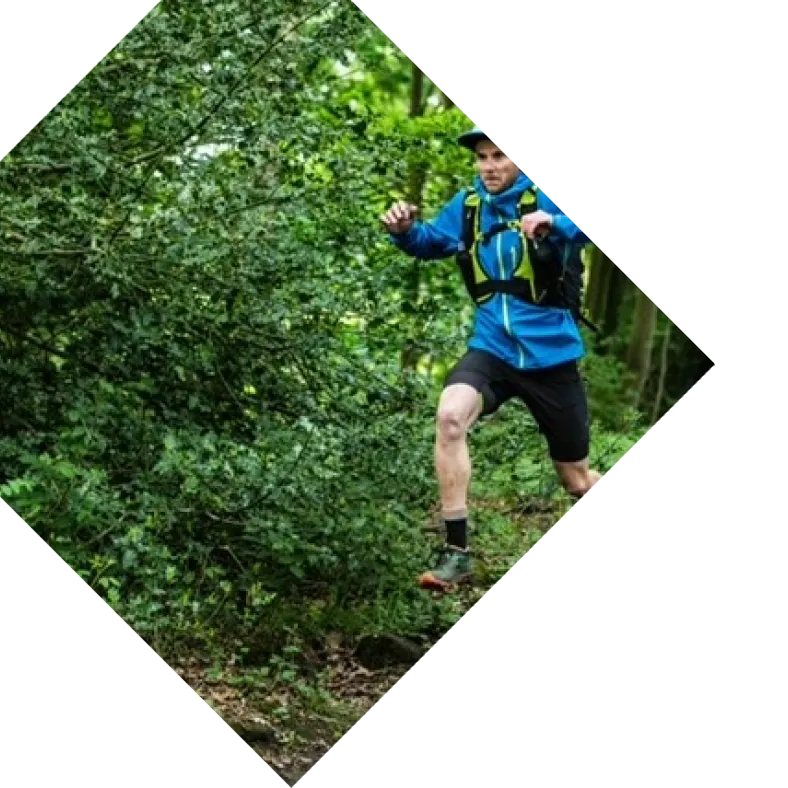Freelance outdoors writer, Tom Hill, takes a look at how Mountain Equipment is working with Gore to minimise its environmental impact when it comes to waterproof garments, and the steps that we can all take to be a little less impactful when it comes to getting outdoors.
“Leave no trace” is a mantra that every outdoors-lover lives by. Enjoying spending time in wild and natural places means we value those precious, fragile and threatened locations perhaps even more than some. In wider life, the impact that human activity is having on the environment – from climate change to micro plastics and dwindling resources – is everyday news.
The overwhelming majority of us understand the need to make changes to our lives; from what and how we consume, to travel choices and reducing our energy use. There is always the niggling irony, in my mind at least, that by venturing into the places that I love, my actions are in some way contributing to the wider threat to our environment. Carbon emissions from car journeys to the mountains, and from the production of the gear that I need all add up. So how can I make a difference, and what should I look for when I next need to buy some new kit?
Big questions – and finding answers
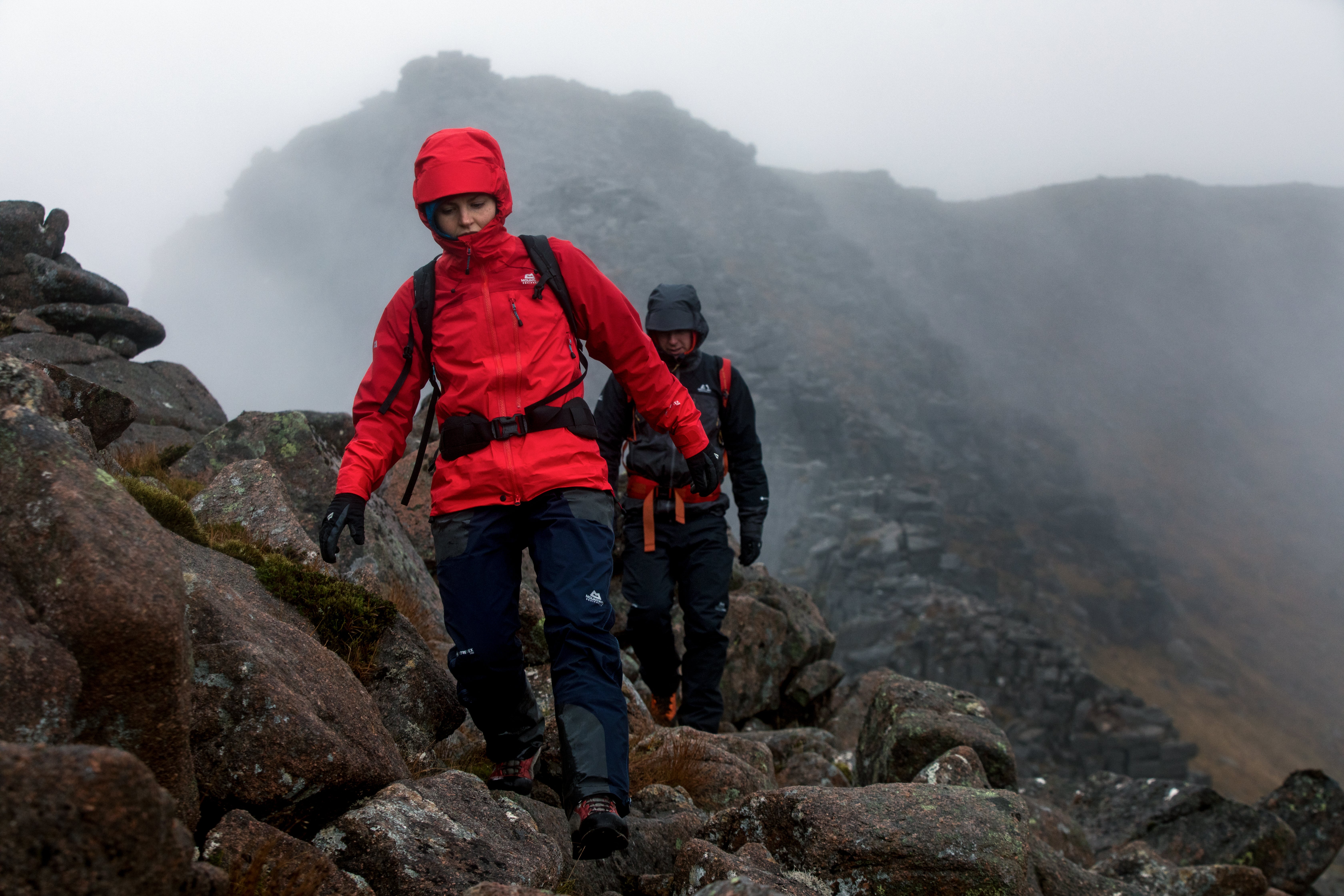
Those are some big, big questions, so I decided to focus my attention on a single garment; and one that everyone who heads into the outdoors will own: the waterproof jacket. I wanted to learn a little more about the whole life impact of the product – from its manufacture to the care it needs throughout its lifetime. I was keen to find out if there is anything being done to reduce that impact and what I can personally do. Feeling a little out of my depth, I really needed some experts to help me out.
I took the opportunity to get in touch with a long-time GORE-TEX brand partner; Mountain Equipment, to bring me up to speed and find out how the companies are working together to push forward new, less impactful, approaches. If we are talking about the science of waterproof fabrics, you could argue that Dr Philippa Hill isn’t just an expert, she is the expert; particularly when it comes to DWRs (Durable Waterproof Repellents). She’s the only person in the world with a PhD in DWRs specifically for outdoor apparel. Not only that, but she is also newly employed at Mountain Equipment as their Sustainability Manager.
And it turns out Mountain Equipment are asking the same questions that I am, but at a company level. “My role is to look at our entire business operation, from our office space to our manufacturing processes and supply chain; the largest area of focus for Mountain Equipment is the impact of our products and the manufacturing processes of our supply chain”, explains Philippa. “Mountain Equipment are using the Higg Index, which has been developed by the Sustainable Apparel Coalition (SAC) to understand the carbon footprint of our products and their manufacture. It’s a transparent and collaborative tool, which allows comparison, and it is used by many of our partners – like Gore – so we can collaboratively work with data.” “We are still working through the process, but once we have completed our assessment, we will publish the results and put in place an action plan to reduce our carbon impact.”
What can we all do?
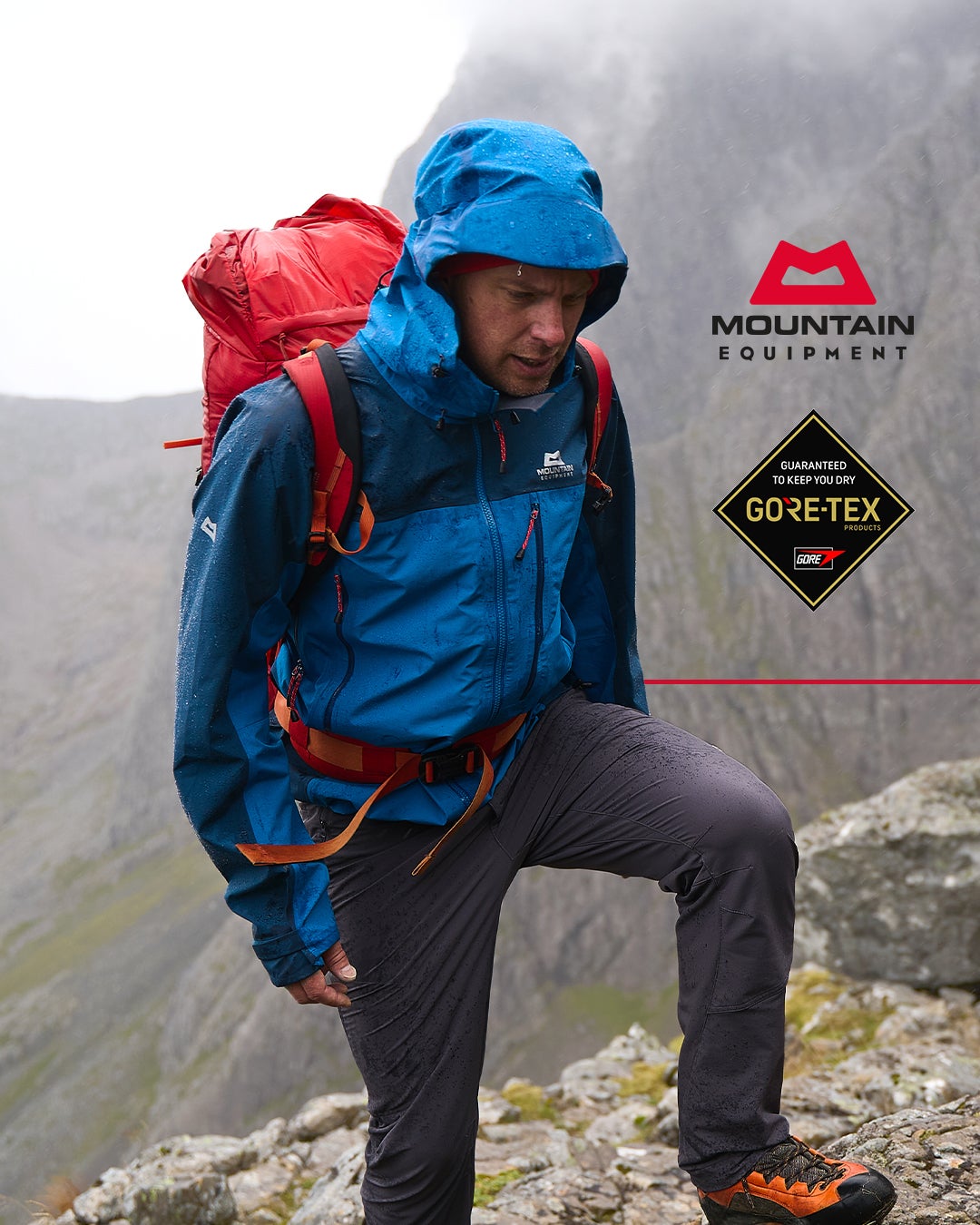
Joining the discussion is Kerry Mellor, who is Social Media and Digital Content Coordinator for Mountain Equipment. I’m interested to know what I can do directly to minimise the impact of my gear. “The biggest thing is taking care of your kit”, Kerry tells me. “We’ve actually been doing a lot of work on simplifying our washing and care instructions. The symbols that we are required to print on garment labels basically tell you what you can do, not necessarily what is needed or best. You can iron most of our base layers for example, but you really don’t need to and it’s totally unnecessary energy consumption.”
“When it comes to waterproofs, there are some things that you should definitely do, however. Modern membranes function their best when they are clean and cared for. Even a jacket that has been mostly stored in a rucksack will pick up dirt and have that DWR finish rubbed off. I’ve got friends who are scared of washing their jackets as they believe they won’t function as well after, but if you use the right treatments the reality is you’ll have a much better performing garment with a longer life span. It’s also worth remembering that if you are a heavy user – maybe a professional, such as a guide – the demands you place on your garments are obviously greater than the average person. For that reason, we’ve actually written a specific gear care guide for pros, which covers ideas like rotating kit [as in alternating clothing, not wearing it back to front!] to prolong its life.” With that, Kerry may highlight the biggest truism when it comes to sustainability.
The best way for us as individuals to minimise our impact is to consume less in the first place. Gore has even done the research to back this up. The Life Cycle Assessment (LCA) of a GORE-TEX jacket shows the greatest environmental impact occurs during production and distribution of the jacket (which make up about 64% of carbon emissions). The washing, drying, and disposal phases of a jacket’s life have a smaller impact on the environment. So, as well as day-to-day garment care, it’s worth embracing wear and tear when it occurs. “The odd nick or tear on an old jacket is just a visible reminder of memories”, says Kerry. “I love it when I’m out on the hill and I see someone in a really old ME jacket.” Small pieces of damage can be patched at home and there are more and more options for kit repair services. Finally, when it does come to making a new purchase, we can choose wisely.
What to buy?
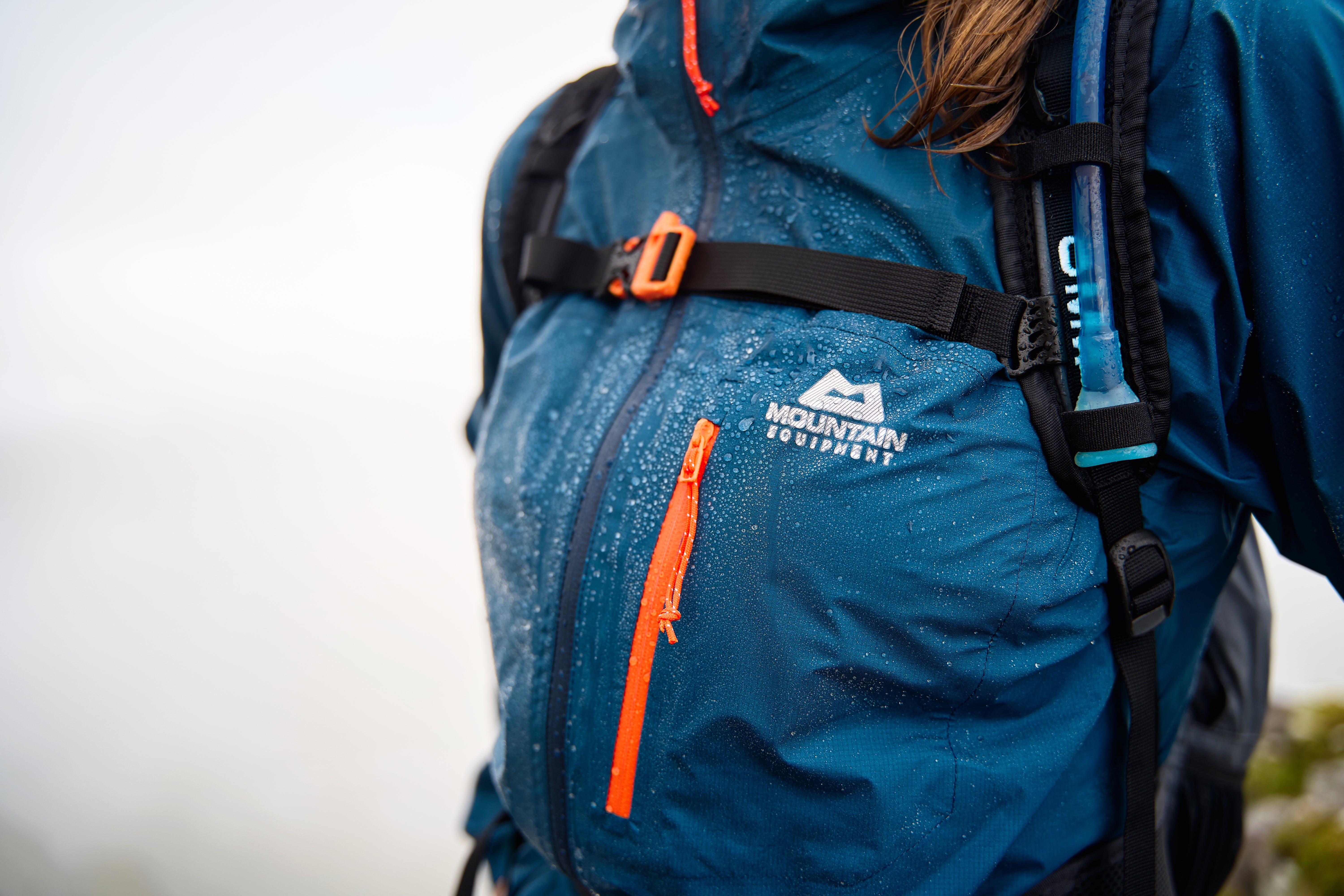
Both Kerry and Philippa make the point that Mountain Equipment focuses much of its effort on high performing, technical clothing that is robust and long-lasting. A durable and high performing shell fabric is an excellent starting point. Fortunately that is at the centre of Gore’s philosophy; creating fit for purpose products that are built to perform and keep on performing over a long lifetime.
Kerry highlights that “GORE-TEX fabrics are not cheap technology but work superbly well. Combine that with the right technical features and you have an amazing jacket that will serve you well for a long time.” And for someone like me, who loves running, mountain biking, mountaineering and many other ways of spending time in the outdoors, I look for garments that can be used across activities. Even sport-specific design features can have cross benefits. Well designed sleeves are equally as useful for climbing as they for mountain biking for example.
A chemistry lesson
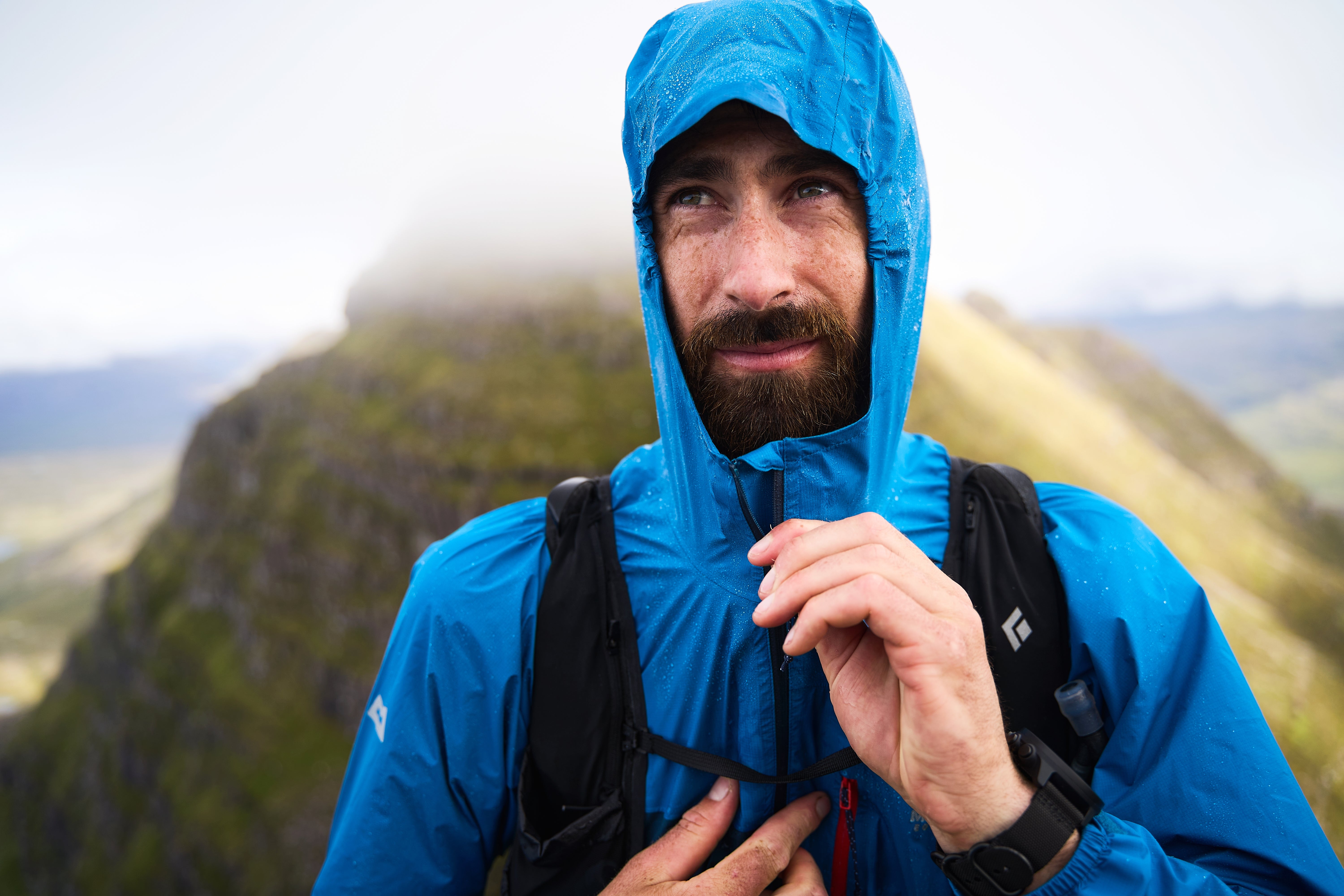
What if we want to go further and look for less impactful garments overall? Philippa gives me a combined chemistry and history lesson… “DWR treatments are fundamental to the function of membrane jackets. The way they work comes down to chemistry. Up until around 2000, DWRs used long-chain (C8) fluorocarbons. Since 2000 the industry has moved to shorter chain (C6) fluorocarbons; largely in response to legislation. These are less impactful to the environment but there is still room for improvement.
“There are now fluorocarbon free options available, but the challenge for these is they require innovative chemistry to try and match the effectiveness and durability of current products. There are some similar challenges around dyeing processes and end-of-life recyclability. The whole industry is looking in the right direction and working hard to find these solutions. We now have two jackets – the Makalu and Rupal – in our range that utilise GORE-TEX brand fabrics with a PFC EC-free DWR. The Makalu is actually also constructed with recycled GORE-TEX fabric.” And that, of course, is the real challenge. The functionality of outdoor gear isn’t a “nice to have” for most of us. In the right (or the wrong) circumstances, our clothing and its performance is at the very least the difference between a fun day or a miserable one, and occasionally the margin between life and death.
The future
So as with so many other areas of our life, there is little that is black and white when it comes to trying to be less impactful and there certainly isn’t a quick fix. But alongside the individual choices we make, it’s heartening to hear that companies like Mountain Equipment and Gore take the question of environmental sustainability seriously and are putting it at the heart of their – and our – future. I’m looking forward to the next generation of technological innovations, but until then, I’ll keep taking care of my current gear and doing what I can elsewhere to minimise my personal impact when I head outdoors.
You may also enjoy
View all articles in this category
Products & Brands
From Trail to Town: Meet the HOKA Transport Hike GTX

Products & Brands
Heritage Meets a New Horizon: SOREL and the GORE-TEX® Brand Redefine the Future of All-Weather Style


